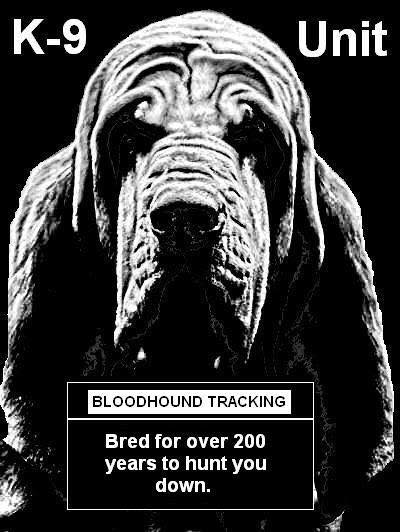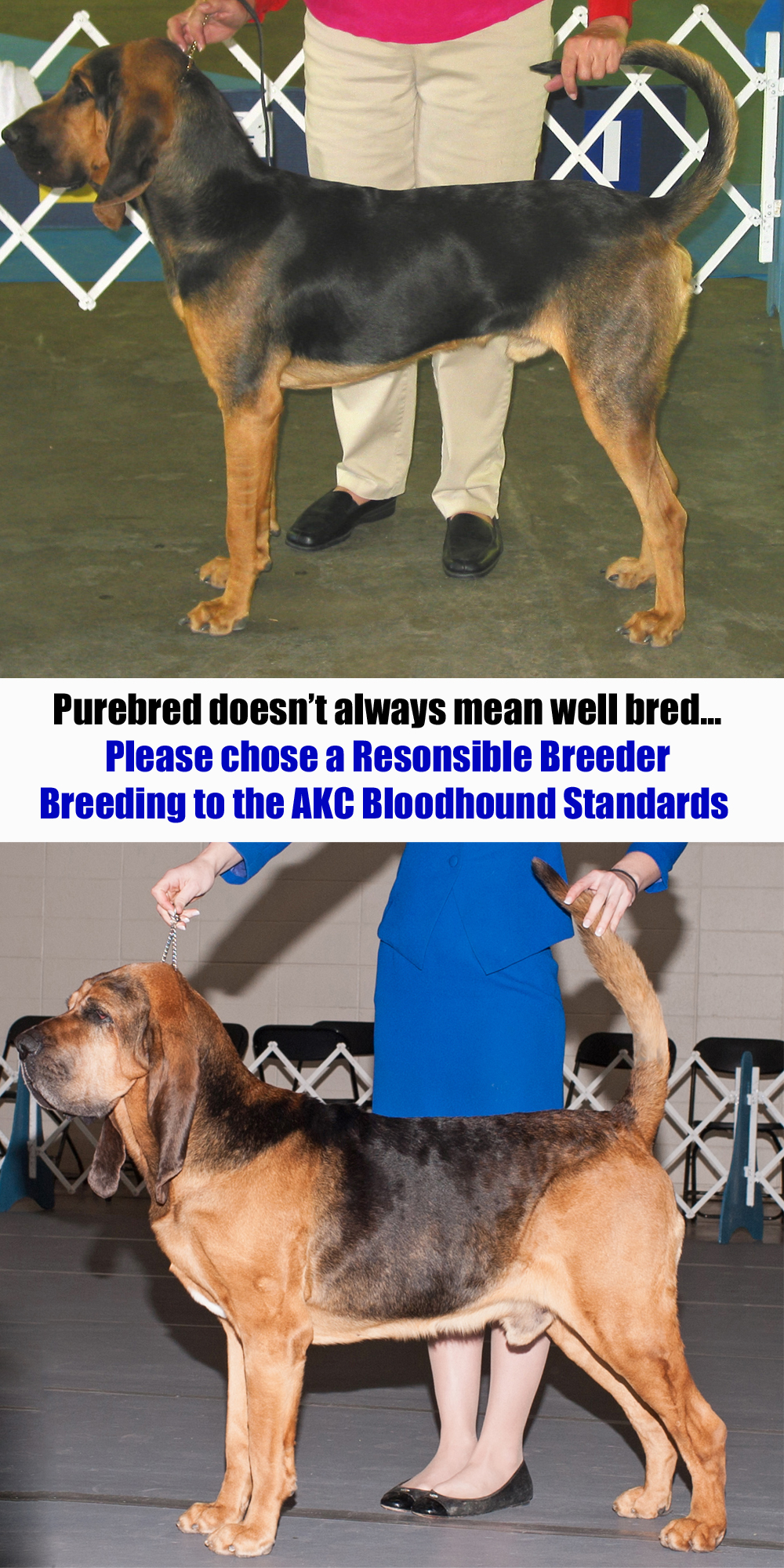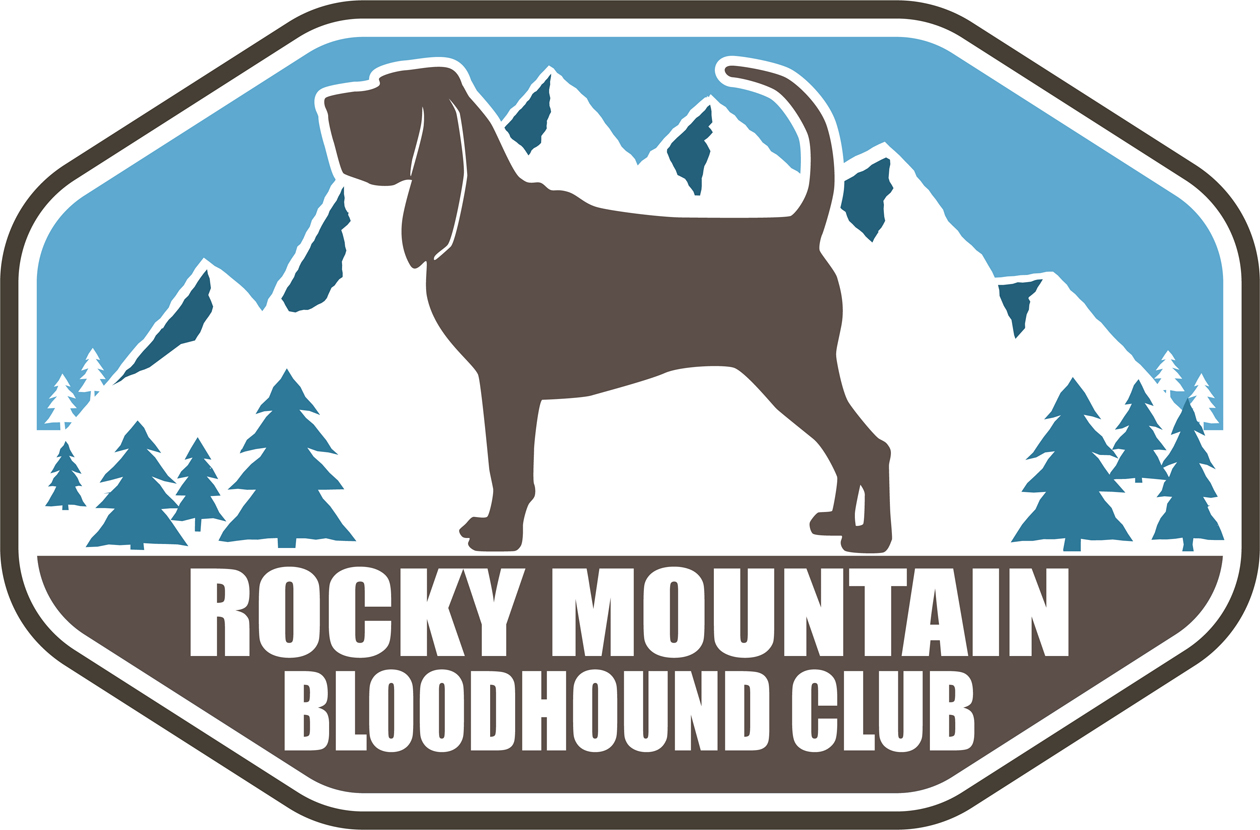Things like Bloodhound History, Bloodhound Basic Information, Bloodhound Basic Needs, Bloodhound Basic Care, Bloodhound Basic Health, Bloodhound Health Problems... to Bloodhound Personality, and Bloodhound Traits; and of course, there is their Amazing Bloodhound Nose which gives them their Incredible Scenting and Trailing Abilities.
Welcome to our page! We are happy you stopped on by!
We are also happy to help you learn about Bloodhounds!
If you have any specific bloodhound questions, just send us an email!
Investigate the breed to learn about them and see if the breed is a good fit for you (your family).
Meet as many bloodhounds as possible. (Visit dog shows, or private homes whatever you have to do.)
Be patient and not in a hurry. Bloodhound puppies and adults are not sitting on a shelf. A responsible bloodhound breeder has puppies rather infrequently.
These important Bloodhound Health Tests are a must for the Sire (Father) and Dam (Mother) of any litter:
- OFA Heart Certificate (an Echo by a Cardiologist)
- OFA Hip Certificate (Excellent or Good preferred, Fair maybe, but avoid dyplastic hips)
- OFA Elbows (should be normal, not dysplastic)
- DM Test (one parent can be a Carrier or At Risk, but it is important that one parent be Clear)
*Run away from any breeder without these tests!
Talk with several breeders and find a breeder you feel you can trust. Be prepared to fill out an application and if approved to be sold a puppy on a contract. Also be prepared to spend $2,000 +/-.
Sadly, not all bloodhound breeders are responsible!
| |
BLOODHOUND HISTORY
A Condensed Version
Compiled by Marlene Groves
1000-2000 BC - There is a plaque, some say is a type of a bloodhound from Ancient Babylon.
630-699 BC -There is an illustration of an ancient dog in the Nineveh Palace that is referred to as a bloodhound/mastiff.
55 BC - When the Romans arrived in Britain they spoke of finding great scent hounds.
727 AD - Beginning with St. Hubert, the French Monastery bred hounds with great noses, courage, endurance, & throatiness. These dogs were mainly black with some red/fawn accents. Many say St. Hubert is the beginning of the true bloodhound.
1066 AD - St. Hubert Hounds were brought to England (often gifts for royalty).
1066 AD - There were also Talbot Hounds (white hounds) at this time.
1270-1305/07 - Bloodhound were called Sleuth Hounds and often used to track and hunt people during the Medieval times of Robert the Bruce and William Wallace.
1859/1860 AD - The first dog show in England was in 1859, the first bloodhounds were entered in the 1860 show.

1700 -1863 - It is said that throughout much of the American Slavery time period Bloodhounds were used to track down runaway slaves.
1888 - Three Bloodhounds were entered at the Westminster Kennel Club dog show.

1910 - There were only about 200 Bloodhounds registered in the American Kennel Club (versus 2,379 Collies, the #1 breed at the time).
1916 - West Virginia mantrailing bloodhound photo.
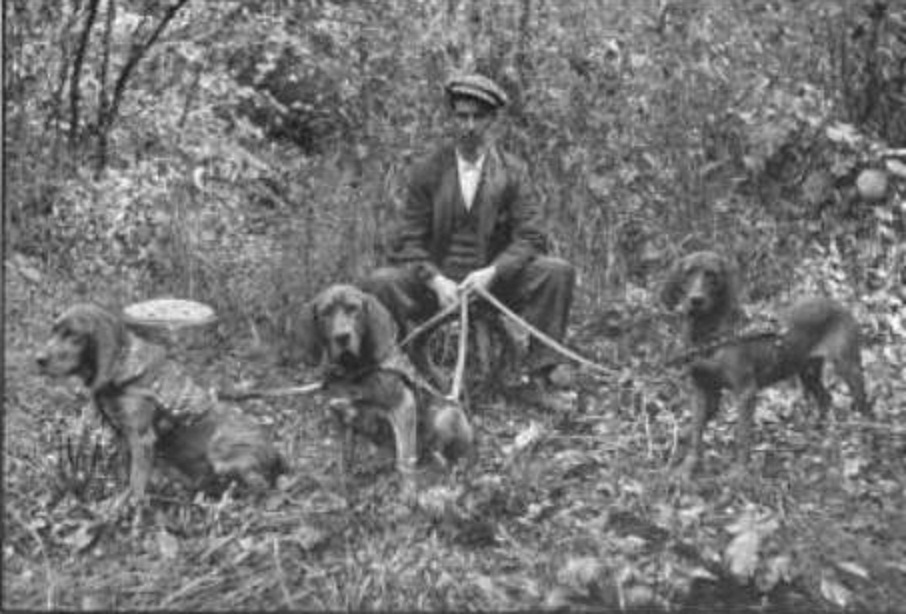
1952 - The American Bloodhound Club was formed with the main objective to encourage and promote quality in the breeding of purebred Bloodhounds.
1962 - The National Police Bloodhound Association was established. It was originally called the Eastern Police Bloodhound Association.

2016 - K9 Radar, owned, loved, trained and worked by Bloodhound Mantracker President & Handler Frank Hurst, won the AKC ACE Award for Uniformed Service. Since that time, this local bloodhound bred by David, Marlene & Karissa Groves of Buffalo Groves Bloodhound Ranch has worked and solved hundreds of cases and put away nearly 40 murderers.

GENERAL BLOODHOUND INFO
Basic Info, Needs, Care, Health

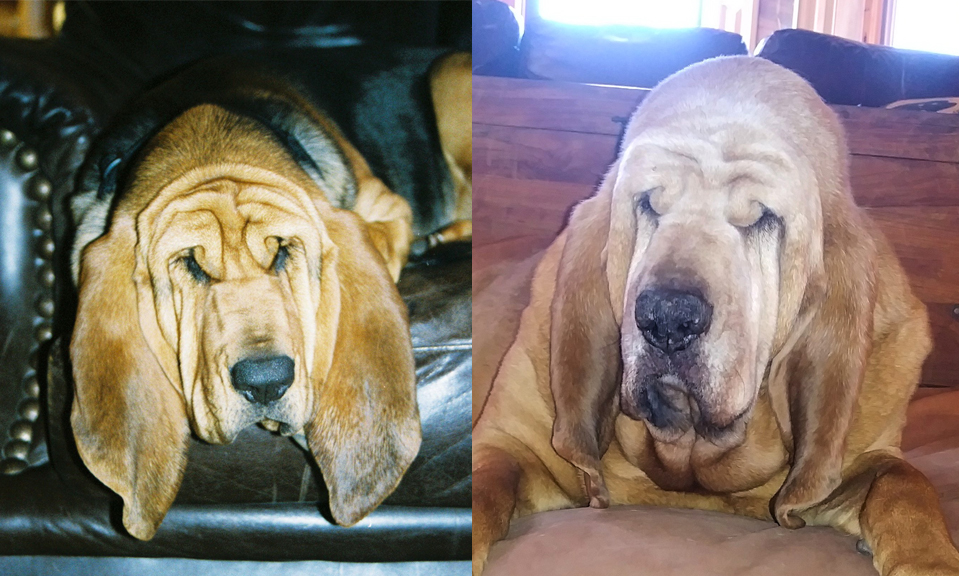
ABOUT THE BLOODHOUND NOSE
Incredible Scenting & Trailing Abilities
Written by Marlene Groves
Bloodhounds are unique dogs.
They are literally designed to sniff/smell
and to process scents (Ps - they love it)!

- Their Nose is wonderful and important:
- they have large nostrils to breath in scent/smells
- the nostril shape even allows for more inflow
- their long noses which means more olfactories
- olfactories are what process scents/smells
- bloodhounds have 300 million scent receptors
( compared to humans with about 6 million)
- Their Ears help them too as they sweep up scent
- Their Surplus Skin around their head and neck, also help by trapping and holding in the scent
- Their Body is very Sturdy, giving them stamina to trail for many (many) miles
- Their Loose Baggy Body Skin helps to protect them from injuries
- Their Big Chest Cavity allows them good large functioning Heart and Lungs.
- Their Feet are Strong and tightly knuckled up to support them on a variety of lengthy trails
- Their Long Neck makes sniffing the ground easy
- Their Drool even helps as the drool somewhat enhances the scent (think potpourri)
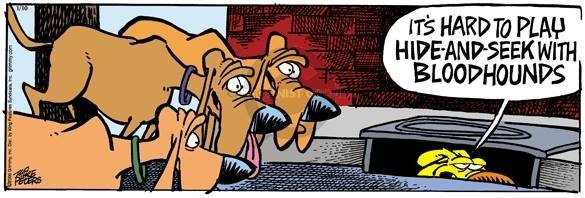
A little about Scent and Dander:
- Humans shed little skin rafts (unseen dander)
- Each person has their very own unique rafts and with that their own unique scents (like scent dna)
- Bloodhounds can smell these scents and they can discern each person's unique scent (this means they can also can follow a unique scent trail)
- Now think Charlie Brown's friend Pig Pen as that is somewhat how rafts and scent drop


